Jollof Rice is a very popular dish in West Africa, it is a colorful and delicious rice dish usually cooked with tomatoes, onions, peppers and various spices. The dish is beloved in West African countries such as Nigeria, Ghana, and Senegal and is considered one of the traditional cuisines of the region.Jollof Rice is often used as part of the celebration of Kwanzaa, a holiday celebrated in the African American community to emphasize community unity, cultural heritage, and self-worth. During Kwanzaa, families and friends come together to enjoy Jollof Rice, demonstrating respect for tradition and unity. To prepare this delicious dish, you will need some basic cookware and ingredients. First of all, you will need a large pot to cook the rice, preferably a non-stick pot to avoid the rice sticking. In addition, you will need chopping knives for cutting vegetables, mixing spoons, measuring cups and containers for spices. Of course, another important part is the ingredients such as fresh tomatoes, onions, peppers, rice and various spices, make sure they are all fresh to ensure the Jollof Rice is delicious. Now let’s explore Jollof Rice recipes and enjoy the fun of cooking and food.
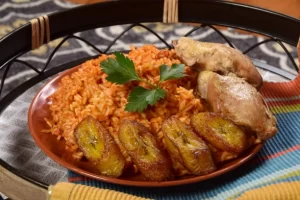
What are the Benefits of Jollof Rice?
A traditional West African dish, Jollof Rice usually contains rice, tomatoes, onions, and peppers, as well as a variety of vegetables and protein sources such as fish, chicken, or beans. These ingredients provide the food with a wealth of nutrients, including carbohydrates, protein, fiber, vitamins and minerals. The use of a large wok or cast iron skillet and a wooden mixing spoon are essential in cooking Jollof Rice. These cooking utensils help to cook and stir the ingredients evenly, ensuring that the Jollof Rice absorbs the flavors evenly. Additionally, Jollof Rice is often seasoned with a variety of spices and seasonings such as ginger, garlic, and chili peppers, which not only add rich flavors to the food, but also have antioxidant and anti-inflammatory properties that help promote good health.
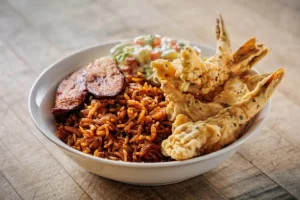
Welcome To My Kitchen! Let’s Make Jollof Rice!
Step 1:
Rinse the rice under cold water until the water runs clear. Drain and set aside.

Step 2:
In a large skillet or pot, heat the vegetable oil over medium heat. Add the chopped onion and sauté until soft and translucent, about 3-4 minutes. Add the minced garlic and cook for an additional minute.
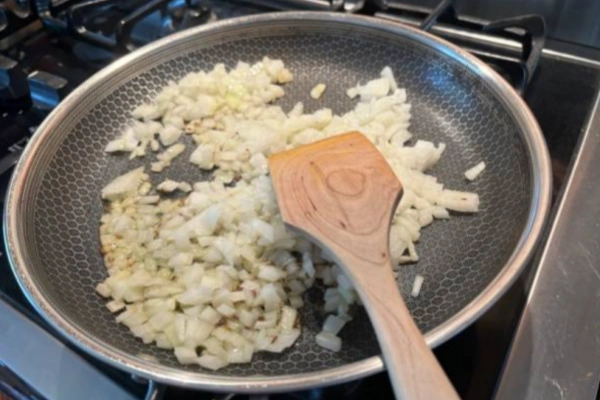
Step 3:
Stir in the tomato and bell pepper puree, tomato paste, ground ginger, nutmeg, paprika, cayenne pepper, and thyme. Cook, stirring frequently, for about 5 minutes to allow the flavors to meld together.
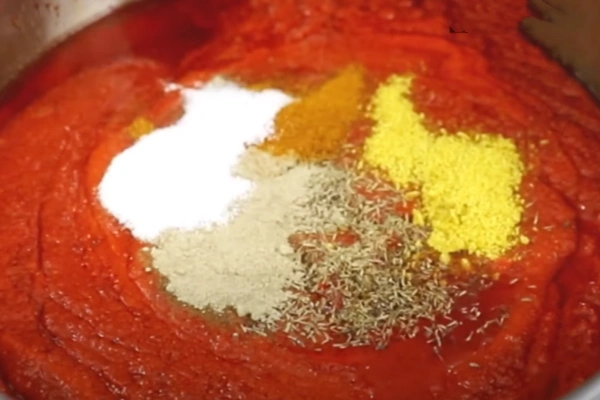
Step 4:
Add the rinsed rice to the skillet and stir to coat it evenly with the tomato mixture. Pour in the chicken or vegetable broth and water. Season with salt and pepper to taste. If using protein, add it at this stage.
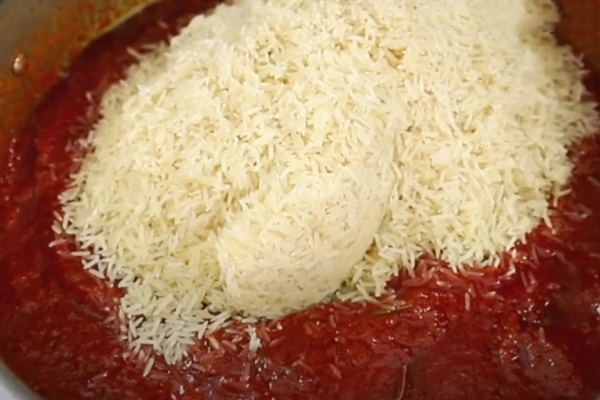
Step 5:
Bring the mixture to a boil, then reduce the heat to low. Cover the skillet or pot with a tight-fitting lid and simmer for 20-25 minutes, or until the rice is tender and all the liquid has been absorbed.
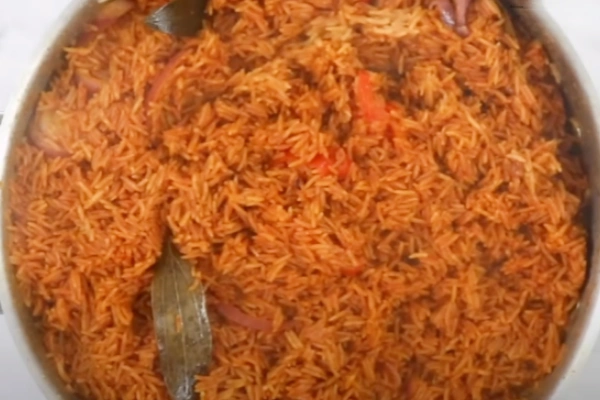
Step 6:
Once the rice is cooked, fluff it with a fork and garnish with fresh cilantro or parsley. Serve hot as a main dish or as a side dish alongside your favorite Kwanzaa delicacies.
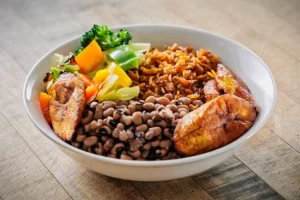
With a history dating back centuries, Jollof Rice is more than just a dish, it is a continuation of a tradition. Through Jollof Rice, people pass on the wisdom of their ancestors and the love of family, a tradition that continues not only at family dinners, but also at festivals and social events. Its delicious flavor and cultural significance have made Jollof Rice an emotional link that crosses borders and connects people’s hearts. As a result, Jollof Rice carries deep emotional and cultural significance at family gatherings and important celebrations, and has become an important part of West African culture, bringing people endless joy and togetherness. Especially during the celebration of Kwanzaa, Jollof Rice symbolizes respect for tradition and unity and is an integral part of the festivities.
Print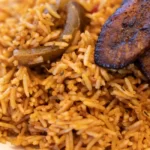
Jollof Rice
5 Stars 4 Stars 3 Stars 2 Stars 1 Star
No reviews
- Author: Chef Sophia
- Total Time: 1 hour
- Yield: 4 Servings 1x
- Diet: Gluten Free
Description
Jollof Rice, an aromatic delicacy, is not only a treat for the taste buds, but also a symbol of West African culture and family togetherness.
Ingredients
- 2 cups long-grain white rice
- 1 onion, finely chopped
- 2 ripe tomatoes, blended into a puree
- 1 red bell pepper, blended into a puree
- 1 green bell pepper, diced
- 3 cloves garlic, minced
- 2 tablespoons tomato paste
- 1 teaspoon ground ginger
- 1 teaspoon ground nutmeg
- 1 teaspoon paprika
- 1 teaspoon cayenne pepper (adjust to taste)
- 1 teaspoon thyme
- 2 cups chicken or vegetable broth
- 1 cup water
- 1/4 cup vegetable oil
- Salt and pepper to taste
- Optional: cooked chicken, beef, or shrimp for added protein
- Fresh cilantro or parsley for garnish
Instructions
Step 1:
- Rinse the rice under cold water until the water runs clear.
- Drain and set aside.
Step 2:
- In a large skillet or pot, heat the vegetable oil over medium heat.
- Add the chopped onion and sauté until soft and translucent, about 3-4 minutes.
- Add the minced garlic and cook for an additional minute.
Step 3:
- Stir in the tomato and bell pepper puree, tomato paste, ground ginger, nutmeg, paprika, cayenne pepper, and thyme.
- Cook, stirring frequently, for about 5 minutes to allow the flavors to meld together.
Step 4:
- Add the rinsed rice to the skillet and stir to coat it evenly with the tomato mixture.
- Pour in the chicken or vegetable broth and water. Season with salt and pepper to taste.
- If using protein, add it at this stage.
Step 5:
- Bring the mixture to a boil, then reduce the heat to low.
- Cover the skillet or pot with a tight-fitting lid and simmer for 20-25 minutes, or until the rice is tender and all the liquid has been absorbed.
Step 6:
- Once the rice is cooked, fluff it with a fork and garnish with fresh cilantro or parsley.
- Serve hot as a main dish or as a side dish alongside your favorite Kwanzaa delicacies.
Equipment

Calphalon Kitchen Knife Set with Self-Sharpening Block
Buy Now →
GreenPan Prime Chatham 1QT & 2QT Saucepan Pot Set with Glass Lids
Buy Now →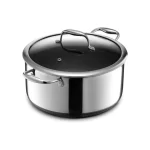
HexClad Hybrid Nonstick 8-Quart Stockpot with Tempered Glass Lid
Buy Now →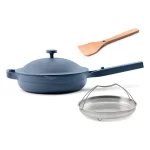
Our Place 10.5-Inch Ceramic Nonstick Skillet Pan
Buy Now →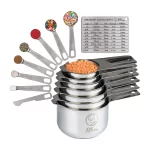
Stainless Steel Measuring Cups and Spoons Set
Buy Now → Buy Now →
Buy Now → Notes
- For extra flavor, you can sauté the rice in the oil for a few minutes before adding the onion and garlic.
- Feel free to customize this recipe by adding your favorite vegetables or protein options.
- Leftover jollof rice can be stored in an airtight container in the refrigerator for up to 3 days. Reheat gently in the microwave or on the stovetop before serving.
- Prep Time: 20 minutes
- Cook Time: 40 minutes
- Category: Holidays
-
How should I make sure the rice is cooked without sticking together?
Make sure the rice is well rinsed before cooking to remove excess starch. When cooking, use the right amount of water, control the heat and stir the rice as soon as it is cooked, avoiding over-stirring which may damage the grains.
-
How should I adjust the spice mix of Jollof Rice to suit my personal taste or dietary preference?
You can increase or decrease the amount of onions, chili peppers, ginger and garlic to suit your personal taste. You can also try adding other spices such as cinnamon, cloves or cumin to give Jollof Rice more layers and flavor.
-
How can I make sure my vegetables stay tender without being overly soft?
If you want your vegetables to stay tender, you can control the cooking time during the cooking process and try to avoid overcooking them. You may also consider adding the vegetables after cooking the rice to minimize their exposure during the cooking process.

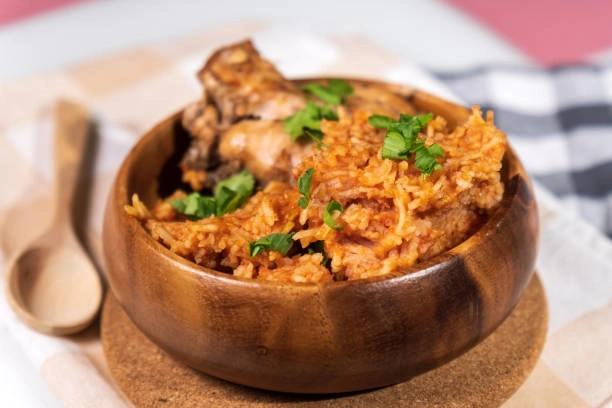
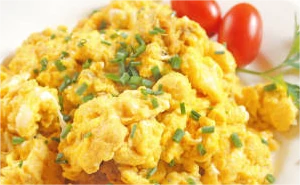

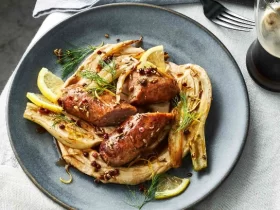
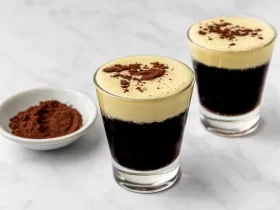
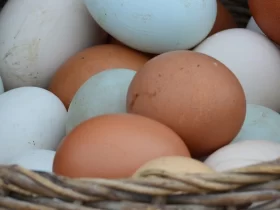

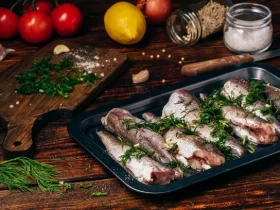
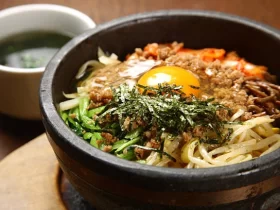
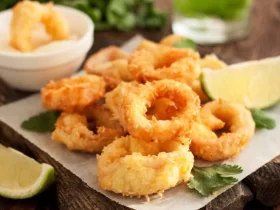




I love the picture presentation of this recipe, it made me understand every step at once, thanks to the author!
The ingredients for this recipe are all easy to find and perfect for someone like me who isn’t much of a cook!
The flavours are really great! I’ll be making this a second time!